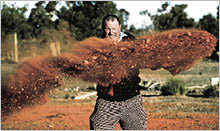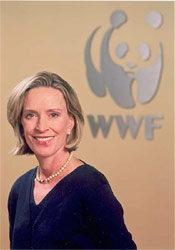
Farmer Treasure
The Sidney Morning Herald
By Gerard Ryle
May 7 2002
Quentin Treasure was a member of a local land-care group when he was approached to take part in an unusual experiment by the West Australian Agricultural Department.
The department wanted to spread a reddish substance over his farmland to see if it would stop unwanted phosphorus from entering waterways.
The bonus, Mr Treasure was assured, was not just environmental. He could look forward to vastly increased crop yields using a soil-improving agent that would cost him just 50¢ a tonne.
But this was no ordinary product. It was industrial waste.
The trucks dumping tonne after tonne of the ochre-like material were coming straight from settling ponds at the nearby Alcoa aluminium refinery, which was co-funding the project.
“We never talked a lot about whether it was safe or not,” Mr Treasure said. “We were just told it was dirt from the hills that came from Alcoa. And being a little bit naive at the time, that is all we assumed it was.” Read More

